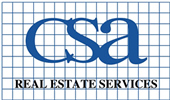City planning is vital for a growing area like Charleston.
Quite often these days we hear long-time residents of Charleston saying that “Charleston is just not the same place that it used to be anymore.” “There are too many people.” “Density is killing the goose that laid the golden egg.” “Traffic is impossible.”
As the old saying goes…nothing is more constant than change! What is happening in Charleston is growth, physical and economic growth, and as healthy as that is, it’s unsettling to many people.
What we have to understand is that Charleston is a basically healthy city, and healthy cities by definition will likely grow. What most people do not grasp is that there are only two ways for a city to grow—up or out.
Charleston’s Residential Growth
Since World War II Charleston has continued to grow out from its historic core on the peninsula and in the direction of cheaper land and more privacy.
West of the Ashley, East of the Cooper, up the neck to North Charleston and Goose Creek, all of these areas have boomed in the post-war suburbanization of the Charleston metro area and all of them are now wondering what the next phase of life for these suburbs will be and how they can continue to be relevant in the context of a city that is growing at a rate faster than even our country as a whole.
How City Planning Is Important
But “Growing Out” has stretched our public funds and infrastructure to the breaking point. Having to build new roads, bridges and schools with each additional new suburb literally taxes our citizens beyond the capacity of our tax base to deliver.
When it comes to the infrastructure necessary to support our insatiable appetite for outward growth, we Charlestonians are now having to admit that we have champagne taste, and a beer budget!
Our growth problems have outgrown our financial ability to reasonably solve them. As a result, Charleston is now left with a community of unaffordable housing, forced automobile ownership with no alternatives for those who cannot or do not care to drive, under-funded schools, and the list goes on.
So what is the solution for balancing growth and building healthy communities?
The first thing to do is to determine what the basic needs of the community are and to be sure that those needs are met first. Food, clothing, and shelter rank high on the list of basic needs.
Having those things close at hand is essential to a healthy community. Having accessible employment that pays a livable wage is how we achieve those first three basic needs.
Low unemployment and a living wage for workers is foundational. Investing in accessible, viable, public transit ensures that those who cannot live close to work will have the ability to get there at a reasonable cost and in a reasonable time-frame. When employees can’t get to work, we ALL suffer.
What’s the Best Way To Use Charleston’s Space?
So what’s a growing city to do? Outward growth no longer being viable, upward growth becomes the only alternative for a growing healthy city. Many folks may wonder exactly what that upward growth might look like in Charleston. The answer to that question is simple: taller buildings and denser housing in the right places—exactly the scenario that is happening in our city today.
The proverbial single-family home on the quarter-acre lot has NEVER paid its way in terms of taxes. The same infrastructure that serves one home on one lot could easily serve many homes on that same lot with a denser design without much additional cost to the taxpayer.
Residential Density
The problem is that people feel threatened by density and they have sometimes even been led to believe that something might be “taken away” from their single-family neighborhoods if we decide to build more densely. This is simply not the case.
Charleston’s West Ashley and James Island suburbs were built out in the single-family plan. Those neighborhoods are now more than 50 years old and will almost certainly remain single-family.
No one is going to build high-rises in neighborhoods like Avondale or Byrnes Downs…but there are hundreds of acres of undeveloped land in the Sam Rittenberg corridor that could easily support higher-rise buildings. The commercial character of Sam Rittenberg is also a good fit for locating housing nearby.
The Sam Rittenberg right of way is excessively wide and could easily support bike/pedestrian lanes and public transit between Citadel Mall and the Navy Yard area on the other side of the North Bridge.
This denser housing is no threat to the existing neighborhoods and will link transit and walkable housing to infrastructure that is already publicly owned in the area…saving millions in tax dollars for other projects like flooding. Sam Rittenberg is generally also a higher elevation than most of the rest of West Ashley.
Charleston Is Growing, Whether You Like It Or Not
As Charleston grows, our goal should be to pull growth in and to force it up so that we optimize the infrastructure dollars we spend. The first-tier suburbs of West Ashley and James Island will by necessity become more urbanized and denser in the next few years simply because these suburbs are immediately adjacent to the historic core of the city and are generally more affordable than downtown.
The thing we need to remember is that what is happening to Charleston is generally healthy growth. We should all strive to be part of the planning for that growth so that when it comes, we will know that there is nothing to be afraid of. We cannot stop growth, but we can certainly plan it and direct it in a citizen-driven way.
